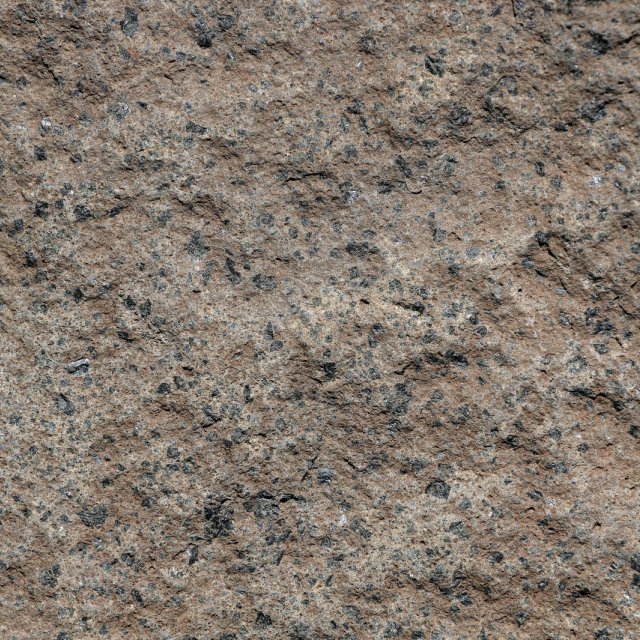
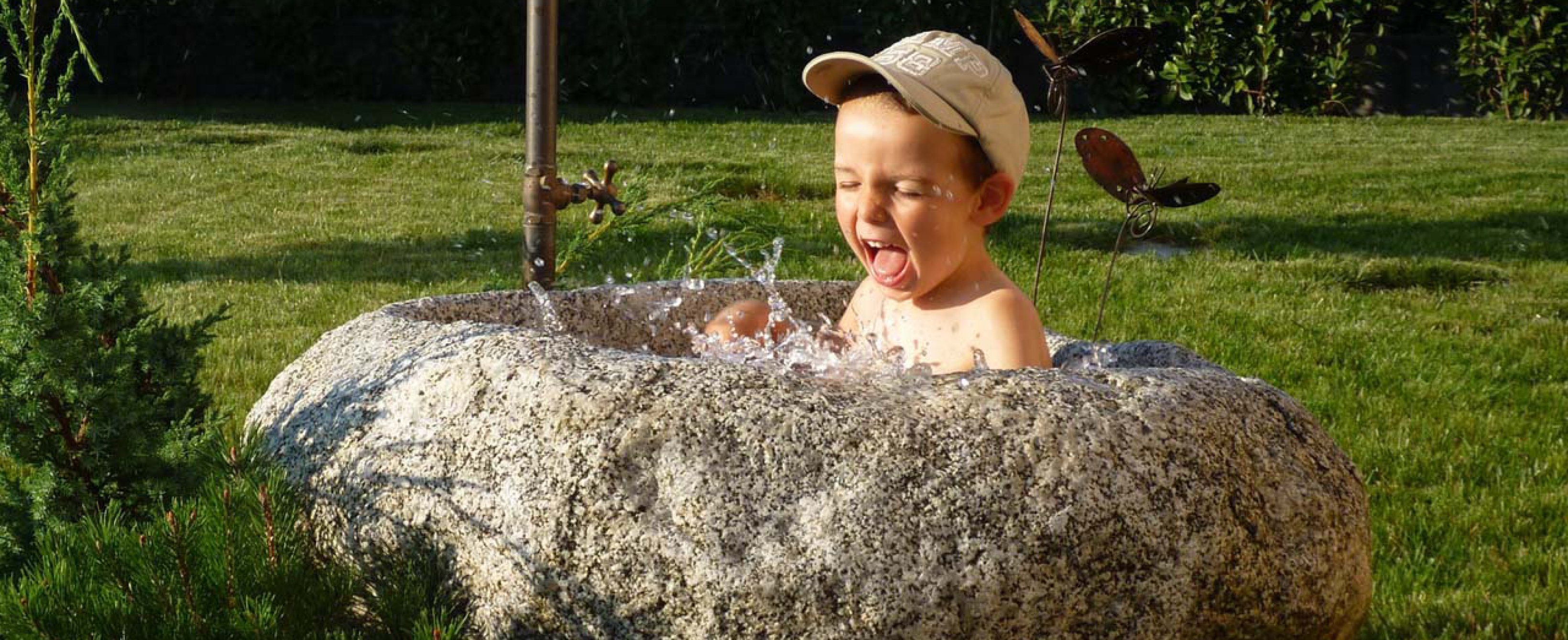
We transport your newly acquired gem of natural stone for your garden safely and reliably to your home. With our own truck and crane, with a length of 22,4 meters, this is no problem.
The first step is to straighten the stone base. The fountain basin will be carefully drilled out with a hollow boring machine. The depth of the fountain basin results depending on the height of the stone. We try to drill out the stone as deep as possible so that the finished fountain reaches the maximum capacity.
The next step is to mill out the basin using a 5-axis milling machine. This cutter is programmed so that the interior of the basin is analogous to the slope of the outer line of the stone - this maximizes the capacity. It also makes the shape of the fountain appear more harmonious and soft.
Our stonemason finely finishes the fountain by hand. He stakes the inner wall and the bottom of the fountain with fine and coarser stone working tools; he drills the drain and sets the faucet.
The drain is then glued into the well bottom, which is flush with it and it usually has a ¾ inch female thread as connection.
The appearance of the water inlet plays a very important role.
The faucet is made to measure in our factory; it is made of brass or stainless steel and is usually placed on the fountain. In case of a thin fountain wall or also for optical reasons, the faucet can also be mounted outside. There are various shapes and sizes to choose from (e.g. round arches or angular milled out watercourses). You can replace the faucet as you wish, we will be happy to realize it.
The installation of the faucet is done professionally. A hole is drilled into the bottom of the fountain, a high quality stainless steel pipe is inserted and counter clamped to the bottom of the fountain - this serves as the water inlet.
All our fountains can be operated with fresh water or with circulation pump. If the fountain is operated with fresh water, an overflow pipe is made to measure. On the other hand, if the fountain is operated with circulation system, a pump and a strainer will be supplied. You only need to provide the electricity for the pump.
We will deliver your fountain to your home with our own truck with truck-mounted crane. Thus, we guarantee a problem-free positioning of your fountain in the garden. We recommend a foundation under the garden fountain to avoid later sinking due to the weight of the stone.
Due to our wide selection and variety of products, we have many satisfied customers who are always happy to visit us.
Natural stone fountains, which are operated with fresh water, do not require special care. If your fountain runs with a circulation pump, the water should be changed regularly; this way you will enjoy it for a long time. If there are nevertheless algae, the fountain can be cleaned using a steam cleaner and brush. In addition, you can get from us additives that prevent the formation of algae and lime.
Before the onset of winter, the fountain and its accessories should be frost-proofed. There should be no standing water in the fountain basin when frost first forms, and the faucet and pump must also be drained.
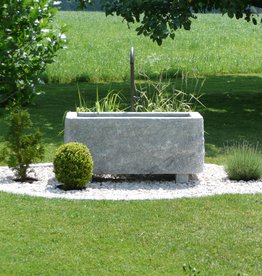
Allgäu-Germany
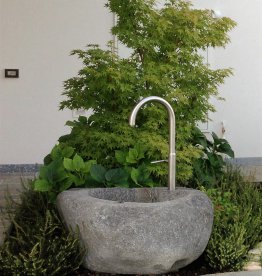
Padova-Italy
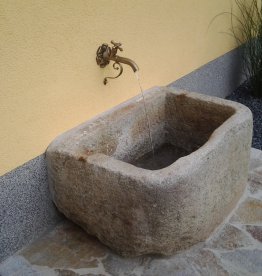
Allgäu-Germany
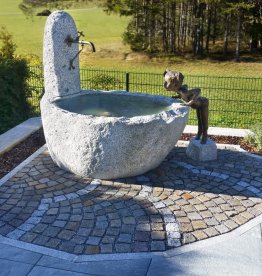
Tirol-Austria
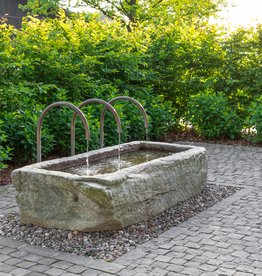
Switzerland
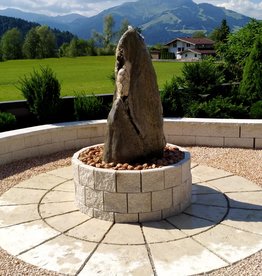
Kirchdorf-Austria
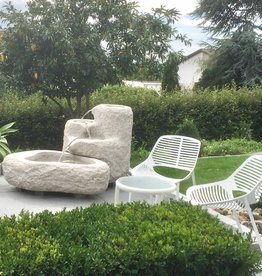
Bodensee-Germany
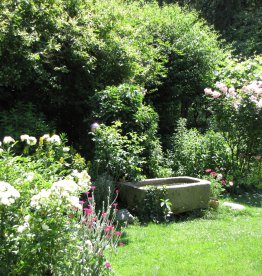
Klausen-Italy
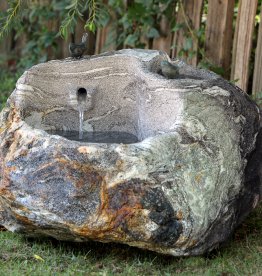
Wuppertal-Germany
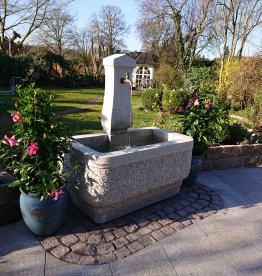
Bremen-Germany
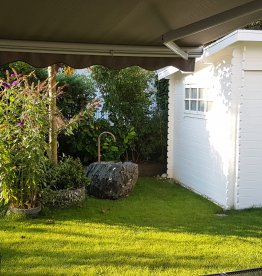
München-Germany
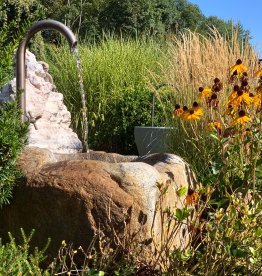
Barbian-Italy
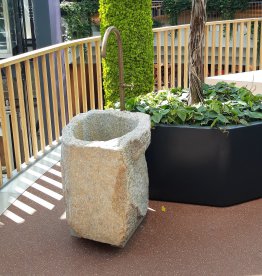
Sportler-Innsbruck-Austria
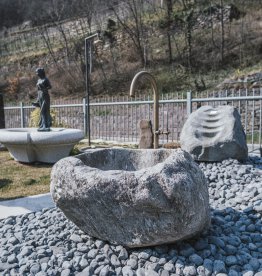
Passeier valley
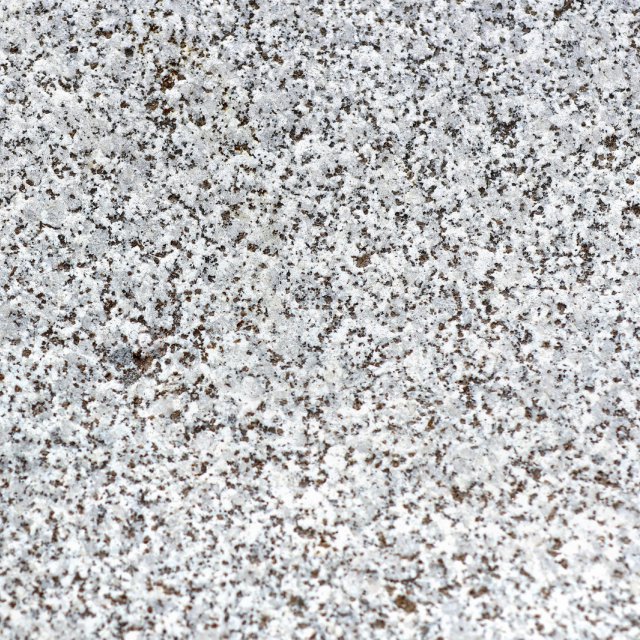
The granite is a composition of quartz, feldspar and mica. It is light in color overall with white, gray, pink or yellowish inclusions. Ore inclusions may also occur. The granite is one of the hardest rocks and occurs in South Tyrol mainly in the area around Brixen and in the Passeier Valley.
Gneisses are formed by the transformation of rock under high pressure and at high temperatures. The composition of gneisses depends on the source rock: The most important minerals in gneiss are not formed during metamorphosis, but are already present in the source material. These stones are mainly found in the Merano area, they are very colorful and interesting.
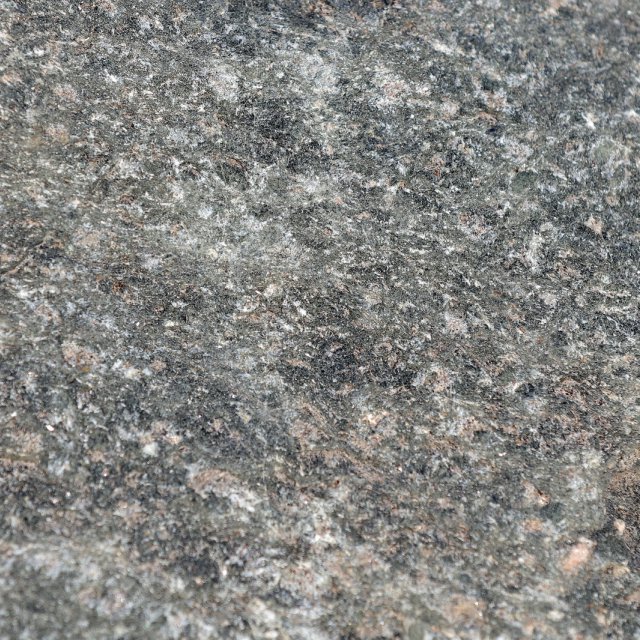
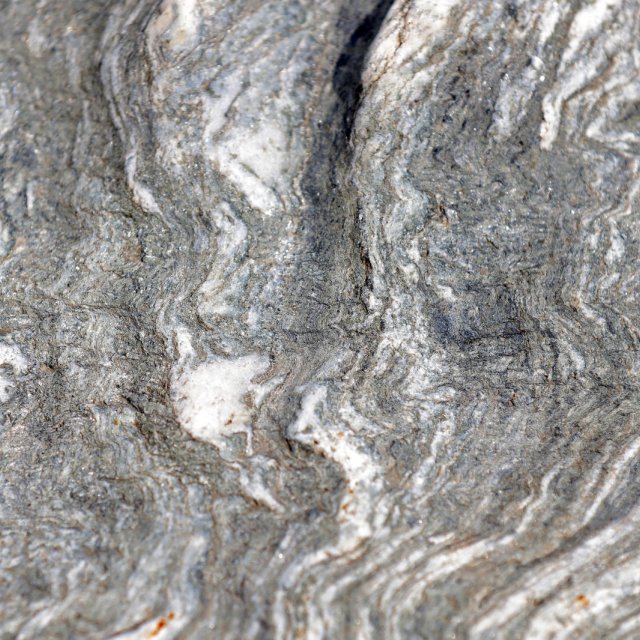
The quartz phyllite is mostly green-gray in color with quartz veins running through it. This stone is mainly found in the Eisack Valley. We prefer to manufacture fountains and washbasins from this beautiful material.
Porphyry is a widely used collective term for various volcanic rocks that have large, well-formed individual crystals in a very fine-grained groundmass. Porphyry has in different colours - red, green, gray or black.
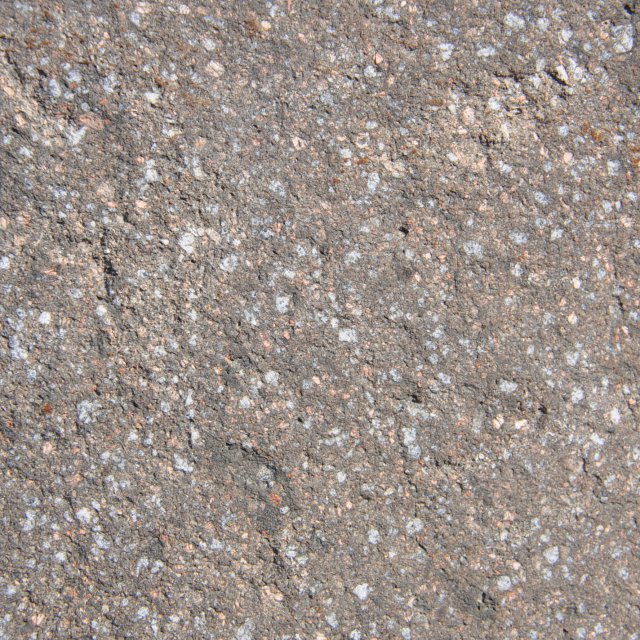
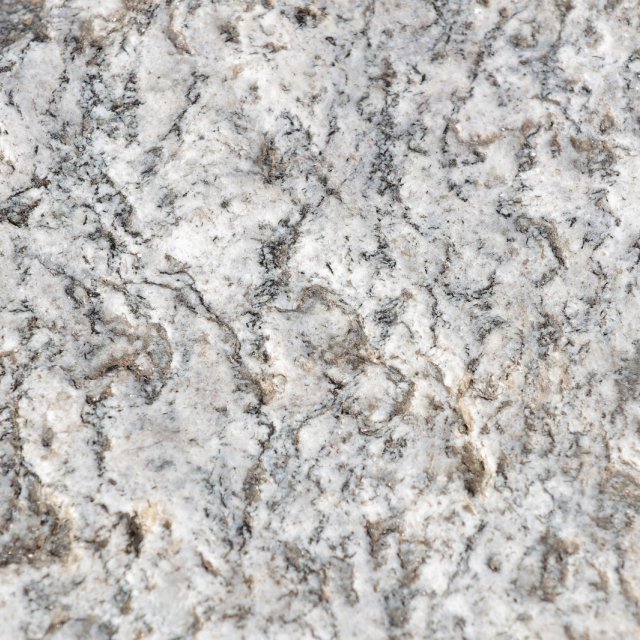
Tonalite is an igneous rock and consists of quartz and mica. In terms of colour it is very similar to granite. This stone can be found in the Texel area, Passiria Valley and in the Ahrntal Valley.
Seiser Basalt: This hard lava rock is an absolute exception in South Tyrol. It is usually found only on the main ridge of the Alps and thus in higher regions. Basaltic lava flows are known from the Dolomite area and were formed about 240 million years ago. This dark rock is robust and very resistant to external weathering influences.
